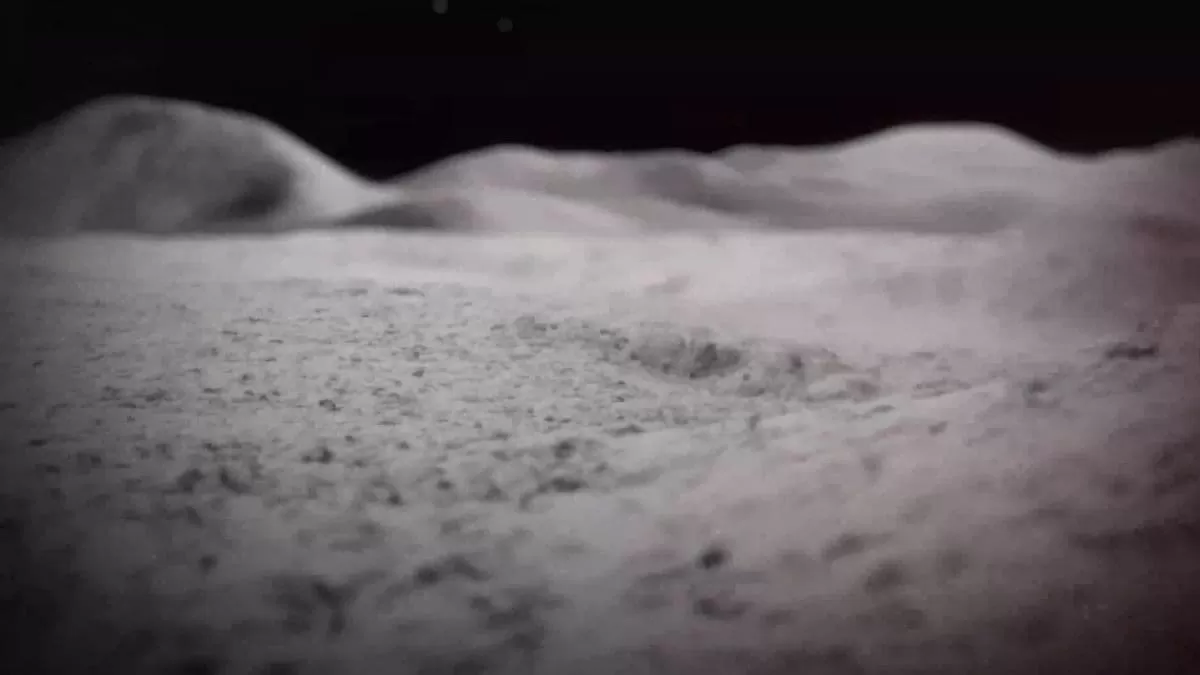A recent study conducted by a team of scientists has revealed a groundbreaking discovery that could change the way we view the moon and other airless bodies in our solar system. The study indicates that water on the lunar surface may have originated from the solar wind, shedding light on the possibility of finding water on other similar objects.
For a long time, the moon was believed to be a dry and desolate place, with no signs of water on its surface. However, this new study has challenged that notion and opened up new possibilities for further exploration and research.
The study, published in the journal Nature Astronomy, analyzed data collected by the Indian Space Research Organization’s Chandrayaan-1 spacecraft. The spacecraft’s Moon Mineralogy Mapper instrument detected the presence of water molecules in the moon’s thin layer of soil, known as the regolith.
Upon further analysis, the scientists discovered that the water molecules were not only present in the form of ice but also chemically bound to the lunar soil. This finding led them to believe that the source of this water could be the solar wind, a stream of charged particles continuously flowing from the sun.
The solar wind is known to contain hydrogen, one of the key components of water. When these hydrogen particles interact with the oxygen present in the lunar soil, they can form water molecules, which then become trapped in the regolith.
This discovery has significant implications not only for the moon but also for other airless bodies in our solar system. It suggests that similar processes could be happening on these objects, leading to the presence of water on their surfaces as well.
One such object is Mercury, the closest planet to the sun. Like the moon, Mercury has a thin atmosphere and a surface that is constantly bombarded by the solar wind. The study’s lead author, Dr. Shuai Li, believes that this could mean that Mercury also has water on its surface.
The implications of this discovery go beyond just the presence of water on these airless bodies. Water is a crucial resource for sustaining life, and its presence on the moon and other objects could mean that they are not as barren and lifeless as we once thought.
Furthermore, the discovery challenges our understanding of the moon’s formation. The most widely accepted theory suggests that the moon was formed when a Mars-sized object collided with Earth, sending debris into space, which eventually coalesced to form the moon. This theory does not account for the presence of water on the moon, and this new study could lead to a new understanding of the moon’s formation.
The discovery also opens up exciting possibilities for future space exploration. The presence of water on the moon could make it a potential resource for future human missions, as it can be used for drinking, farming, and even fuel production. It could also serve as a stepping stone for further exploration of other airless bodies in our solar system, such as Mars and the moons of Jupiter and Saturn.
However, this study is just the beginning, and there is still much to be learned about the moon’s water and its origins. The scientists involved in the study are planning to further analyze the data and conduct experiments to better understand the process of water formation on the lunar surface.
In conclusion, the recent study on the lunar surface’s water has opened up a new realm of possibilities and has challenged our previous understanding of the moon and other airless bodies in our solar system. It highlights the need for further research and exploration to unlock the mysteries of our cosmic neighborhood. Who knows what other secrets await us in the vastness of space?

